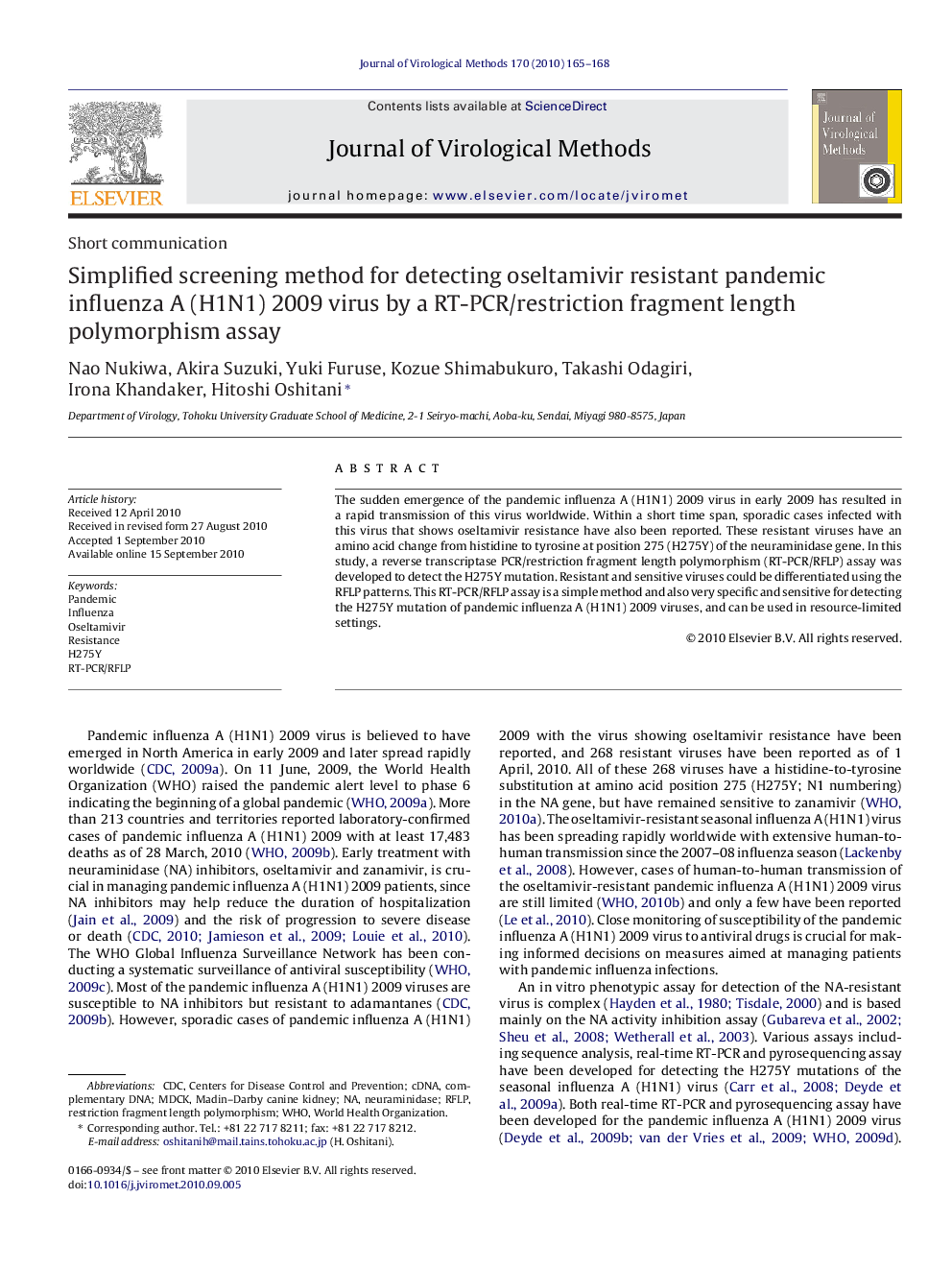| Article ID | Journal | Published Year | Pages | File Type |
|---|---|---|---|---|
| 6135044 | Journal of Virological Methods | 2010 | 4 Pages |
Abstract
The sudden emergence of the pandemic influenza A (H1N1) 2009 virus in early 2009 has resulted in a rapid transmission of this virus worldwide. Within a short time span, sporadic cases infected with this virus that shows oseltamivir resistance have also been reported. These resistant viruses have an amino acid change from histidine to tyrosine at position 275 (H275Y) of the neuraminidase gene. In this study, a reverse transcriptase PCR/restriction fragment length polymorphism (RT-PCR/RFLP) assay was developed to detect the H275Y mutation. Resistant and sensitive viruses could be differentiated using the RFLP patterns. This RT-PCR/RFLP assay is a simple method and also very specific and sensitive for detecting the H275Y mutation of pandemic influenza A (H1N1) 2009 viruses, and can be used in resource-limited settings.
Keywords
Related Topics
Life Sciences
Immunology and Microbiology
Virology
Authors
Nao Nukiwa, Akira Suzuki, Yuki Furuse, Kozue Shimabukuro, Takashi Odagiri, Irona Khandaker, Hitoshi Oshitani,
